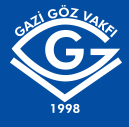2Op. Dr., İstanbul Medipol Üniversitesi Tıp Fakültesi, Göz Hastalıkları Anabilim Dalı, İstanbul, Türkiye
3Prof. Dr., İstanbul Medipol Üniversitesi Tıp Fakültesi, Göz Hastalıkları Anabilim Dalı, İstanbul, Türkiye Purpose : Evaluation of the effect of optic nevre head drusen (ONHD) on retinal nevre fi ber layer (RNFL) and macular ganglion cell inner plexiform layer (GCIPL) by spectral domain optical coherence tomography (SD-OCT).
Materials and Methods: Twenty-nine eyes of sixteen patients with ONHD were compered with thirty eyes of thirty age-matched and sex-matched control group. The patients underwent circumpapillary and macular scanning. GCIPL and RNFL thicknesses were recorded in each quadrant. Patients with buried and superfi cial drusen were evaluated separately. GCIPL and RNFL thickness of patients were compared in each group.
Results: Peripapillary RNFL thickness measured by OCT were thicker in the buried drusen group in superior and inferior quadrants than in patients with superfi cial drusen. When control patients were compared with patients with buried drusen, the RNFL in the buried drusen group was signifi cantly thicker in all quadrants. Mean perifoveal GCIPL thickness was 65.25 ± 8.30 ?m and 66.88 ± 4.70 ?m in the buried drusen group and in the control group, respectively. But there was no signifi cant difference. When GCIPL thickness was examined in every quadrant it was seen that there was a thinning in the ONHD group, but this difference was not statistically signifi cant.
Conclusion: In patients with buried drusen, changes in RNFL thickness can be a problem to detect axonal loss. GCIPL analysis in patients with drusen buried to detect axonal loss may be a more determinant predictor of drusen progression and severity compared to RNFL changes.
Keywords : Optic nerve head drusen, optical coherence tomography, ganglion cell?inner plexiform layer, buried optic nerve head drusen




